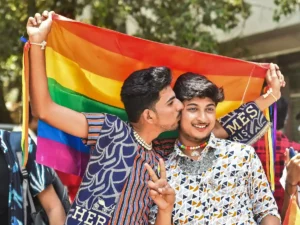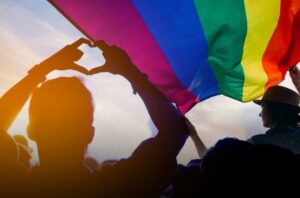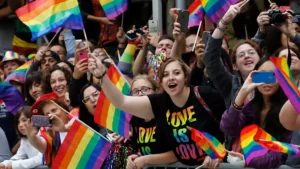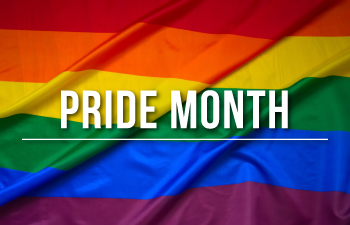Every June, we see a rainbow of colors illuminate the world in a dazzling show of solidarity, signifying the advent of Pride Month. This celebration is much more than just a vibrant festival. Rather, it’s a tribute to the struggles overcome and the milestones achieved by the LGBTQ community. In this blog post, we aim to explore the origins, significance, and beautiful hues of Pride Month that remind us of the ongoing journey towards inclusivity and acceptance.
Contents
What Is Pride Month In India?
 Pride Month in India, celebrated every June, is a commemoration of the LGBTQ+ community’s history, struggles, and achievements. It mirrors the global recognition of Pride Month, fostering a sense of community and promoting equality and acceptance for all sexual orientations and gender identities. Despite the country’s complex legal and social history concerning LGBTQ+ rights, Pride Month is a time of increased visibility, dialogue, and action toward the empowerment and inclusion of the community.
Pride Month in India, celebrated every June, is a commemoration of the LGBTQ+ community’s history, struggles, and achievements. It mirrors the global recognition of Pride Month, fostering a sense of community and promoting equality and acceptance for all sexual orientations and gender identities. Despite the country’s complex legal and social history concerning LGBTQ+ rights, Pride Month is a time of increased visibility, dialogue, and action toward the empowerment and inclusion of the community.
Indian cities like Delhi, Mumbai, Kolkata, and Bengaluru, among others, often host vibrant Pride parades, discussions, film screenings, and cultural events. These all are uniting individuals from various walks of life in a celebration of diversity and love. It is a testament to the resilience of the community and a beacon of hope for a more inclusive future.
What Is The History Of Pride Month?
Pride Month traces its roots back to the late 1960s in the United States. Particularly to an event known as the Stonewall Uprising. On June 28, 1969, in the early hours, police raided the Stonewall Inn, a gay bar located in Greenwich Village in New York City. At that time, it was common for law enforcement to carry out such raids, resulting in the arrest of patrons.
However, on this particular occasion, the patrons, along with other community members, fought back, sparking six days of protests and violent confrontations with law enforcement. The Stonewall Uprising served as a catalyst for the gay rights movement, not only in the United States but also around the world.
On the first anniversary of the Stonewall Uprising, on June 28, 1970, the first gay pride marches took place in New York, Los Angeles, and San Francisco. And Chicago to commemorate the event.
In 1999, President Bill Clinton officially declared June as “Gay and Lesbian Pride Month” in the United States. This declaration was expanded by President Barack Obama in 2009 to include the bisexual and transgender community. Thus marking June as “Lesbian, Gay, Bisexual, and Transgender Pride Month”.
What Is The Significance of Pride Month?
 Pride Month is a significant event for various reasons.
Pride Month is a significant event for various reasons.
Firstly, it serves as a commemoration of the historical struggles and accomplishments of the LGBTQ+ community. The Stonewall Uprising, a pivotal moment in the gay rights movement, is remembered and honored during this time.
Secondly, Pride Month is about visibility and acceptance. It’s an opportunity for the LGBTQ+ community to come forward in the public eye, showcasing the diversity within the community, and challenging the societal norms that have traditionally marginalized them. Pride parades and events are a bold statement of self-acceptance and the affirmation of unique identities.
Thirdly, Pride Month is a time for advocacy and the progression of LGBTQ+ rights. It brings attention to ongoing issues such as discrimination, violence, and denial of basic human rights. That many members of this community face worldwide. Advocacy during Pride Month can help influence policy changes, push for legal protections, and educate people about the community’s experiences and challenges.
Finally, this serves as a beacon of hope and unity. It is a celebration of love, freedom, and diversity that brings together not only the LGBTQ+ community but also allies, families, and friends. It’s an occasion that embodies the spirit of acceptance and understanding, striving to build a more inclusive and compassionate world.
What Are The Symbols Of The Pride Colors?
The most recognized symbol of the LGBTQ+ community is the Pride flag, also known as the Rainbow flag. This flag was designed by artist Gilbert Baker in 1978 and originally featured eight colors. Each with a specific meaning. However, the flag has been modified several times over the years. The most common version used today consists of six stripes, each representing a different aspect of the community and its shared experiences.
Here’s what each color in the six-stripe flag represents:
- Red
This color stands for ‘life.’ It signifies the vitality and energy in the LGBTQ+ community.
- Orange
Representing ‘healing,’ this color symbolizes the recovery from harm or prejudice that many members of the community have faced.
- Yellow
The ‘sunshine‘ color embodies the cheerfulness, positivity, and spirit of the LGBTQ+ people.
- Green
This stripe stands for ‘nature,’ reminding everyone of the natural diversity of human sexuality and gender identity.
- Blue
Signifying ‘serenity,’ this color represents peace and harmony within the community and its relationship with the wider society.
- Purple
This color stands for ‘spirit.’ It embodies the character, soul, and shared values of the LGBTQ+ community.
In addition to the traditional rainbow flag, several other flags represent specific identities within the LGBTQ+ community. Such as the Transgender Pride flag, the Bisexual Pride flag, the Lesbian Pride flag, and many others. Each of these symbols underscores the diversity within the LGBTQ+ community and emphasizes the importance of recognizing and respecting each unique identity.
How Is Pride Month Celebrated?
 Pride Month is celebrated worldwide through a wide range of activities that not only raise visibility for the LGBTQ+ community but also help educate the public about the issues the community faces. And celebrate the progress made in the fight for equality.
Pride Month is celebrated worldwide through a wide range of activities that not only raise visibility for the LGBTQ+ community but also help educate the public about the issues the community faces. And celebrate the progress made in the fight for equality.
Pride Parades
One of the most visible and well-known Pride Month celebrations is Pride Parades. In this, the members of the LGBTQ+ community, along with their allies, friends, and family, march through the streets of cities across the world. These parades are typically vibrant, colorful events, with floats, costumes, music, and dance, that create a celebratory atmosphere of acceptance and love.
Educational Workshops and Panels
Many communities and organizations use Pride Month as an opportunity to educate about LGBTQ+ history and rights. This is often done through workshops, panel discussions, and lectures, which cover topics like the history of the LGBTQ+ movement, current political issues, and experiences of being LGBTQ+.
Cultural Events
Pride Month is also marked by cultural events. Such as film festivals, concerts, art exhibits, poetry readings, and theater performances that highlight and celebrate LGBTQ+ artists and their work.
Community Gatherings
Pride Month often features community gatherings like picnics, parties, and networking events that bring together members of the LGBTQ+ community. And their allies to celebrate and support one another.
Activism and Advocacy
This is also a time of heightened activism and advocacy for LGBTQ+ rights. This can take many forms, from protests and rallies to lobbying for legislative change, to fundraising for LGBTQ+ organizations.
Vigils and Memorials
Some communities also hold vigils and memorials during Pride Month to remember those who have been lost to hate crimes or HIV/AIDS.
Each celebration is unique and reflects the diversity within the LGBTQ+ community itself. These events serve as a time for celebration, protest, and a reminder of the work still to be done to achieve full equality for all, regardless of sexual orientation or gender identity.
Conclusion
To conclude, Pride Month is more than just a celebration. Rather, it’s a vibrant testament to the resilience, courage, and diversity of the LGBTQ+ community. Its history, steeped in both struggle and triumph, serves as a powerful reminder of the resilience of the human spirit. From the riotous protests of Stonewall to the colorful parades we see today, the journey of Pride Month is one of progressive evolution.
The celebration of it- is a collective affirmation of identity and a call to every individual, regardless of their orientation or identity. Ultimately, to foster a world where love, in all its forms, is celebrated. Life may sometimes be challenging for people from the LGBTQ community, but Online LGBTQ Counseling can help. Get experienced LGBTQ therapists at PrideMantra: Book a trial LGBTQ therapy session


